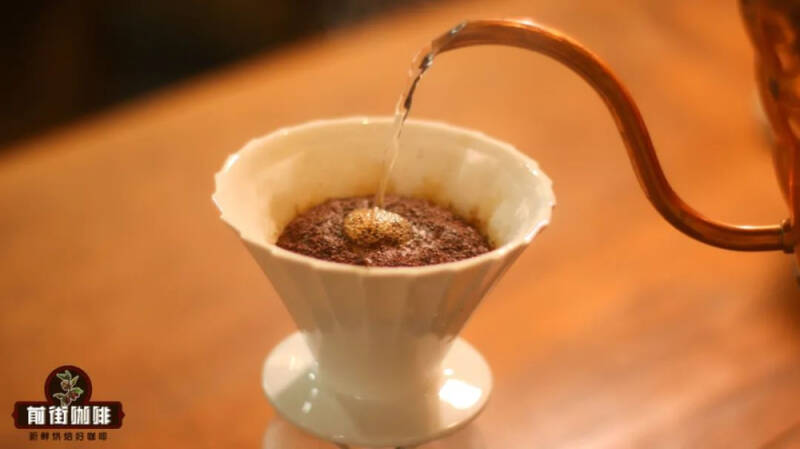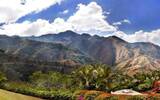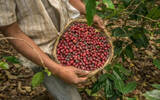What is the foam when brewing coffee by hand? Is the appearance of white bubbles too exquisite? What does Italian concentrated golden oil have to do with foam?
When we make hand-made coffee, we always see a lot of bubbles on the surface because of the effect of carbon dioxide, right? But I wonder if my friends have ever observed that these bubbles are sometimes different.

In the process of brewing, the color of the foam is sometimes brown and sometimes white, or in different periods of time, its quantity is sometimes rich and sometimes rare. In short, it is changing all the time. You know, the ever-changing it actually conveys a lot of information to us. Come on, pick up your notebooks and start the Qianjie Coffee Class!
What is the foam that emerges during cooking? When the steamed powder bed comes into contact with hot water, it will burst out a lot of foam in an instant. Generally speaking, the bubbles that appear at this time are brown and yellow. I wonder if you have anything to think of?

Yes, the fat of espresso! It is the body of oil that has not been pressed. The structure of this foam is made up of carbon dioxide, grease, a little fine powder, and large particles of coffee powder. For example, when the Italian coffee machine adds pressure to the extraction, this layer of foam seeps out from the bottom along with the coffee and compresses into a fragrant golden oil (Crema)!
So what message does the color of bubbles convey? With the deepening of cooking, we will find that the color of the foam begins to turn white, gradually changing from the original brown to white. Some people say that the white bubble is a pre-warning, so is this really the case?
There are two reasons for the appearance of white foam: the first is that the coffee powder has been depleted of oil, and the second is that the coffee particles floating on the surface begin to sink. Both are "important pigments" that color foam, so when brewing can no longer release oil and coffee particles begin to sink because they are full of water, the color of the foam changes from brown to white.
To answer the previous question, is it true that the white bubble has passed the pre-extractive warning? From the above two points, we can judge that this is the case. Coffee particles float on the surface because they are not fully extracted at the beginning, resulting in a large amount of carbon dioxide hidden in the bean body, giving it the ability to float on the liquid surface. However, with the gradual progress of the extraction, these particles are gradually eroded by water, and when hot water fills its body, it shows that the extraction has begun to approach the tail end. If we continue to increase the extraction efficiency, it will be very easy to overextract. So basically to the latter part of the brewing, we will reduce the range and speed of the circle, increase the flow of water, so that the hot water can pass through the coffee powder more quickly and avoid excessive extraction. We can observe the extraction process of espresso. The coffee liquid changes from dark yellow at the beginning to yellow, and then to light yellow.
Let's talk about the richness of the bubble! The richness of foam is mainly affected by two aspects, one is the degree of baking, the other is the degree of freshness!
The amount of foam varies according to the degree of baking that affects the degree of baking. Deep-baked beans have a loose texture and are more likely to hide large amounts of carbon dioxide because they take a long time to bake. But at the same time, it will be better extracted. So at the moment it comes out, the number of bubbles that burst out will be very large.
Light-baked beans are hard, making it difficult to absorb too much carbon dioxide, and the hard shell makes it less easy to extract. Therefore, both the degree of bulging and the amount of foam will be much lower than that of deep-baked beans.
The influence of freshness is often said in Qianjie that coffee beans are in a continuous exhaust stage from the moment the roasting is finished. In addition to the aromatic substances, the most important gas it emits is the carbon dioxide that forms the foam. Therefore, when coffee beans are still in a fresh period when they contain a lot of carbon dioxide, we can burst out very rich bubbles. But when it is fresh and carbon dioxide is exhausted, there are very few bubbles that we can flush out.
Therefore, the roasting degree, freshness and extraction process of coffee beans are the messages that these foams can convey to us. We can determine the baking degree and freshness of the foam by matching the state of the drum with the number and color of the foam, and then understand its extraction process according to the color change of the foam. This can enhance our further understanding of coffee extraction and better brew delicious hand-brewed coffee!
-END-
Front Street Cafe
No. 10 Baoqian street, Yandun road, Dongshankou, Yuexiu district, Guangzhou, Guangdong province
Important Notice :
前街咖啡 FrontStreet Coffee has moved to new addredd:
FrontStreet Coffee Address: 315,Donghua East Road,GuangZhou
Tel:020 38364473
- Prev

Guatemalan Coffee beans | introduction of Rosa Coffee beans in New Oriental region
Speaking of Rose Summer, many people will think of Panama. In 2005, the Emerald Manor used the Rose Summer variety to participate in the competition and bid for the best Panamanian BOP, and won the championship for its unique flavor and unusually high score, which broke the auction price of coffee beans at that time, which also made the Rose Summer variety famous. This move
- Next

Increased coffee supply but reduced income in Honduras will increase coffee exports to China
Recently, the price of Arabica coffee is relatively stable, as the output of Arabica producing countries has rebounded and the supply of coffee exports has increased. Especially in Central America, according to the Coffee Institute of Honduras, the largest coffee producer in Central America, 932678 bags were sold in Alabica, Honduras, in February 2024.
Related
- What effect does Italian American coffee with filter paper have? Will coffee taste better if it is put on filter paper at the bottom of the powder bowl?
- What is the color difference in coffee beans? What are the characteristics of honey processed coffee beans? Why are the anaerobically treated coffee beans uneven in color?
- How does novice Xiaobai quickly get started and make coffee? Newbies learn to make coffee by hand and share the specific steps and process process!
- Costa tea has a shelf life of 100 years?! Expert: Unable to verify
- It's a huge uproar! American milk addition was rejected by Manner employees?!
- Mocha pot coffee bean recommendations| How fine and how much powder should be used for grinding? What parameter ratios do I need to use to make milk with Mocha pot coffee?
- What are the characteristics of the world's top ten coffee beans treated with Costa Rica honey? How to make black honey kadura from Tarazhu Pilon Processing Plant taste good?
- How to make deep-roasted coffee? What grinding water temperature does authentic Jamaica Blue Mountain No. 1 coffee use to brew it well?
- Selected high-grade rose summer coffee flavor tasting guide Why Panama rose summer has the aroma of flowers and fruits
- What equipment does a novice Xiaobai need to buy to learn to make coffee? Filter cup electronic scale bean grinder manual flushing pot purchase guide

